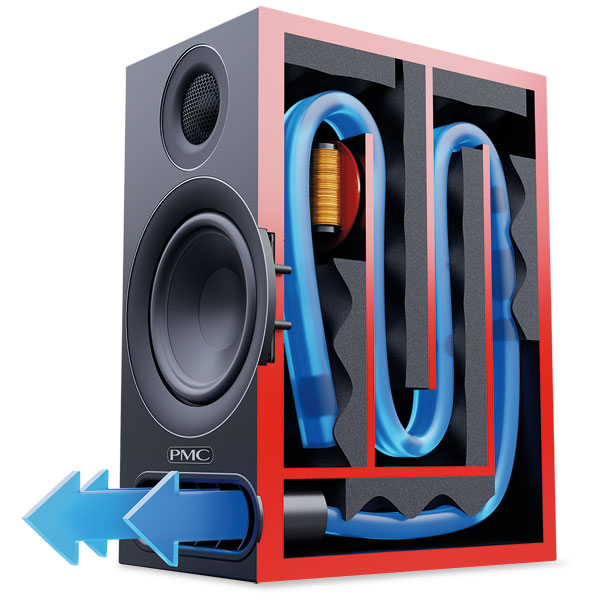PMC prodigy1 Loudspeaker Tiny Transmission
Speakers with ports or other apertures in their cabinets are typically 'reflex' designs that exploit the Helmholtz resonance of the port air mass to boost their low-frequency output. Transmission line bass loading is a variant of this technique seen some 90 years ago but formally proposed in 1965 by Arthur Bailey in Wireless World. Bailey's solution utilises the Helmholtz resonance, albeit within a far longer, and typically folded and tapered acoustic channel. The overall length of this pipe determines its quarter-wavelength tuning (ie, 4.3m for 20Hz), while foam or wool damping within the channel is used to attenuate the rear output and any reflections or resonances within the enclosed air space [see inset picture].

deally, transmission lines should be closed – as seen in B&W's Nautilus [HFN Jan '13] – or sufficiently long and well-damped that no vestigial bass output escapes from its 'open' end. This is rarely practical, and especially so in PMC's cute 'shrunk in the wash' prodigy1 which has a very short ~1.5m channel tuned to a notional 60Hz. The relative output from PMC's 'Laminair' port is higher here than from its far larger cabinets incorporating longer, folded ATL (Advanced Transmission Line) channels [HFN Aug '21]. This delayed output, including resonances, exits very close to the 133mm pulp bass/mid driver where local cancellation and reinforcement complicates the 'smoothness' of its bass. PM

















































